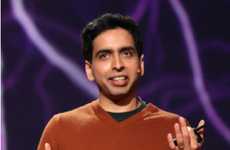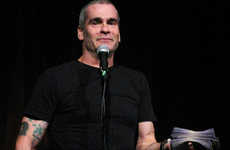
Malcolm Gladwell Keynotes
Keynotes by Malcolm Gladwell are as complex and inquisitive as his famous non-fiction written works....

Need Inspiration?
Get inspired by 4,000+ keynote speaker videos & our founder, a top keynote speaker on innovation.
Malcolm Gladwell’s Human Potential Keynote Tells Why Talent is Art
Elise Ying-Hei Ho — December 7, 2012 — Keynote Trends
References: gladwell & player.vimeo
Malcolm Gladwell, author of ‘Blink’ and ‘Outliers,’ shares his thoughts on how talent is categorized and how to maximize it within individuals in his human potential keynote.
Talent is not a scarcity. Rather, it is due to society’s lack of nourishing that has led to the cap and seeming lack of potential. Taking the example of the Medicine Hat Tigers, Gladwell explains, using its roster, that talent is superficial and can easily be broadened if certain constraints were eliminated. The difference between average and extraordinary, he continues, is only separated by artificial limitations like birth date. Since the cutoff for most sports is in the beginning of the year, people who were born in the later half of the year are, in comparison, seen as smaller than the others, creating a confusion between bigger versus talented kids.
In another case, the author looks at performance by Chinese-Americans and Caucasian Americans born in the late 1940s to see why the former outperforms the latter, as described by James Robert Flynn. Gladwell narrows down the root causes of artificial talent into three groups, one of which being cultural. Having grown up in stricter environments, Flynn’s observations revealed that Chinese students will work past their limits to achieve their goal while Americans forfeit at the preset time limit.
Talent is not a scarcity. Rather, it is due to society’s lack of nourishing that has led to the cap and seeming lack of potential. Taking the example of the Medicine Hat Tigers, Gladwell explains, using its roster, that talent is superficial and can easily be broadened if certain constraints were eliminated. The difference between average and extraordinary, he continues, is only separated by artificial limitations like birth date. Since the cutoff for most sports is in the beginning of the year, people who were born in the later half of the year are, in comparison, seen as smaller than the others, creating a confusion between bigger versus talented kids.
In another case, the author looks at performance by Chinese-Americans and Caucasian Americans born in the late 1940s to see why the former outperforms the latter, as described by James Robert Flynn. Gladwell narrows down the root causes of artificial talent into three groups, one of which being cultural. Having grown up in stricter environments, Flynn’s observations revealed that Chinese students will work past their limits to achieve their goal while Americans forfeit at the preset time limit.
3.4
Score
Popularity
Activity
Freshness
















